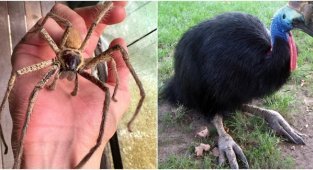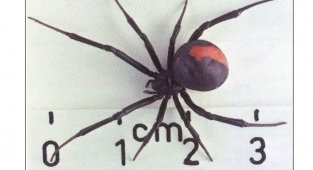Spiders are one of the most successful arthropods on the planet. They are found on all continents except Antarctica. Not all eight-legged arachnids are poisonous, but there are species that are very dangerous and even fatal to humans. Here's a list of some of the deadliest spiders on Earth, from the notorious black widow to the terrifying Australian funnel-web spider. 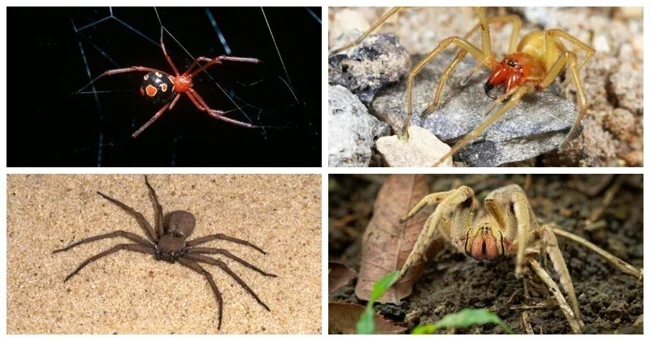
1. Brown recluse spider 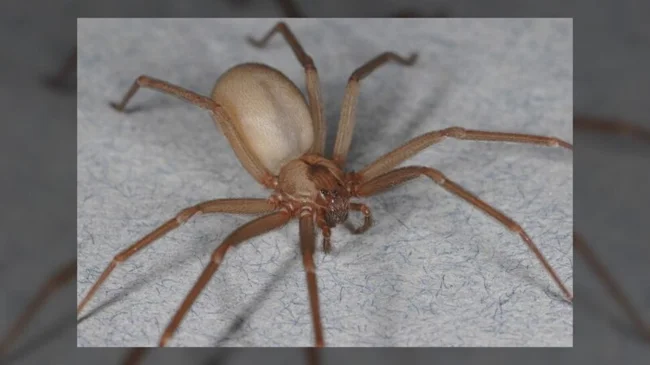
As their name suggests, brown recluse spiders (Loxosceles reclusa) have a shy nature and tend to hide in dark, sheltered areas. However, the brown recluse spider will bite if it feels threatened, and its bites can be fatal. The species is typically found in the southern and central United States, from southeastern Nebraska to southwestern Ohio, south to northwest Georgia, and Texas.
The brown recluse spider can be dangerous to humans because its venom contains a toxin that causes skin necrosis. A few hours after the bite, symptoms such as burning and itching in the damaged area, as well as fever and nausea, develop. In extreme cases, the poison can cause serious reactions and even death, especially if small children or elderly people are affected.
2. Hobo Spider 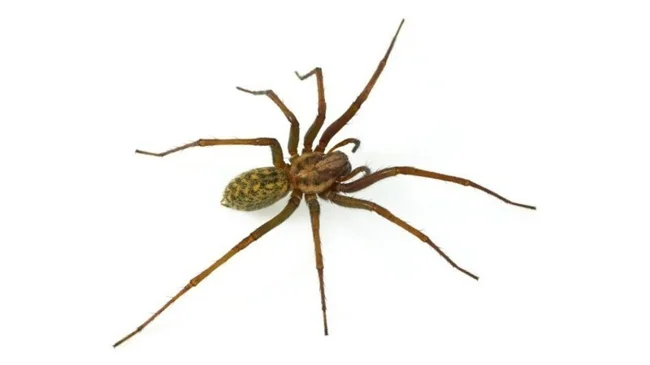
Even arachnologists have difficulty identifying hobo spiders because there are many similar spiders and because there is great variation within the species itself.
The hobo spider (Eratigena agrestis, formerly Tegenaria agrestis) belongs to the family of spiders known as funnel-web spiders and is recognized by its light brown coloring and multiple v-shaped chevron patterns on its abdomen. It is often confused with the brown recluse spider, but the latter is much more dangerous to humans. Although hobo spiders are known to bite if they feel threatened, there is much debate about how venomous they actually are. In any case, caution is a good idea, especially for young children.
Hobo spiders are not very good climbers, so their funnel-shaped webs can be found at ground level. Geographically, they are distributed in western North America, the Pacific Northwest and Great Basin, and throughout Europe to central Asia.
3. Black Widow 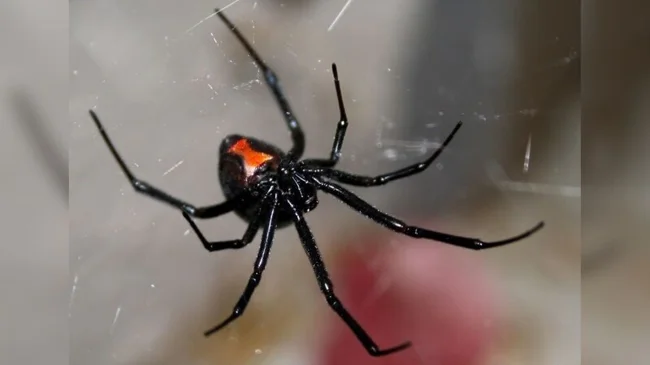
In the genus Latrodectus, the black widow is one of the most venomous spiders and is found on every continent except Antarctica. The female black widow spider can be identified by her shiny black body and distinct red hourglass shape on the underside of her abdomen. The male black widow is smaller, brown or gray in color with small red spots, and does not have the hourglass marking.
Although both male and female black widows are venomous, only the female is dangerous to humans. Its venom is 15 times stronger than that of a rattlesnake. The only saving grace is that the amount released during a bite is much less, so deaths are rare. The bite of this spider causes very painful sensations - nausea, fever, sweating, anxiety, muscle spasms and difficulty breathing. These symptoms may last for several days.
4. Brazilian wandering spider 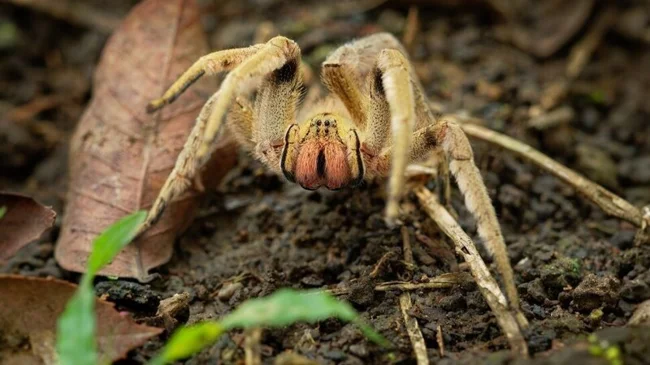
The Brazilian wandering spider (Phoneutria boliviensis) lives in the dry and moist tropical forests of Central and South America.
Spiders of this species are also called armed spiders or banana spiders (as they usually hide in banana batches). They belong to the genus Phoneutria, which means "killer" in Greek, and the name is apt since Brazilian wandering spiders are among the most venomous on Earth.
This arachnid is aggressive, and instead of setting up camp, the Brazilian wandering spider actively hunts its prey by moving along the ground. If you ever find yourself in Central and South America, such as Costa Rica or Argentina, be careful. The spider's neurotoxic venom is extremely painful and affects the nervous system, causing increased sweating and drooling, loss of muscle control, breathing problems and, in some cases, unwanted prolonged erections.
5. Yellow sac spider 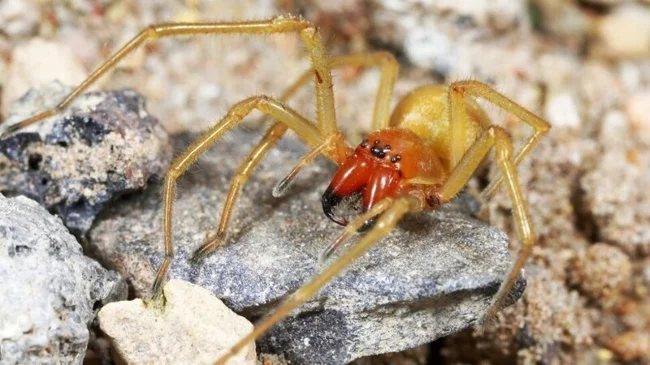
This is the only spider in Europe whose bite can penetrate human skin.
Yellow sac spiders (Cheiracanthium) belong to the family Cheiracanthiidae and are likely responsible for more human bites than any other spider species. These arachnids are distributed throughout the globe, from America to Northern Europe, from South Africa to India and even Australia and Japan. These are nocturnal predators, and during the day they hide in small white cocoons.
Slightly poisonous to humans, the bite of the yellow sac spider can be painful and is sometimes misdiagnosed as a brown recluse bite. The venom can cause necrotic lesions as well as redness, swelling and ulcers around the bite site.
6. Brown Widow 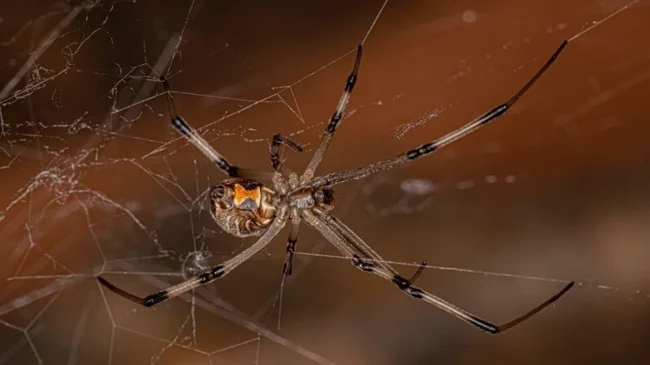
Both the female black widow and the female brown widow have a telltale red hourglass-shaped mark on the underside of their abdomen.
The scientific name of the brown widow is Latrodectus Geometry. This spider looks similar to its infamous relative, the black widow, right down to the hourglass-shaped marking on its abdomen, but there are some key differences. The brown widow's markings are orange-yellow rather than red, and as their name suggests, they are predominantly tan and brown spotted and have a spiky rather than smooth appearance. This spider comes from South America and is found all over the world.
The brown widow's venom is less toxic than that of its black relative. However, it can also be fatal. Although they do not produce as much venom as a black widow, a brown widow's bite can cause pain, sweating, muscle stiffness, and vomiting.
7. Red Widow 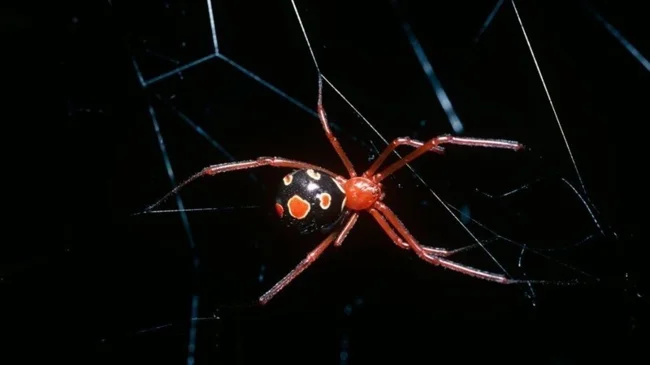
The red widow (Latrodectus bishop) is another member of the widow gang, found primarily in the sand dunes of Central and South Florida (USA). The venom of this spider is as lethal as that of brown and black widows, but since the species lives in desolate areas, no bites have been recorded in the medical literature. The female red widow's venom is a neurotoxin that is thought to cause long-lasting muscle spasms.
The spider has a red-orange head and legs and a black abdomen with yellow rings around red dots. Instead of an hourglass marking, the red widow usually has one or two red markings.
8. Redback Spider (Australian Widow Spider) 
The female redback spider has a long red stripe down its back.
Because of its strikingly similar appearance, the redback spider (Latrodectus hasselti) was once considered a subspecies of the black widow, but it is a separate species. It is often called the Australian black widow and can be found throughout Australia, Southeast Asia and New Zealand. The redback spider has been found as far away as Japan, the United Arab Emirates and Belgium, where it ended up through unintentional importation.
The bite of a female redback spider is highly poisonous and can be life-threatening. Using its fangs, the spider injects a complex venom that causes severe pain at the site of the bite, as well as sweating and goosebumps. Over time, these symptoms worsen and may include redness and swelling, as well as nausea, muscle twitching, headache and fever. In severe cases, respiratory failure may occur. Fortunately, in 1956, scientists released an antivenom that is very effective even if used several weeks after the first bite. No deaths have been reported since then.
9. Australian Funnel Spider 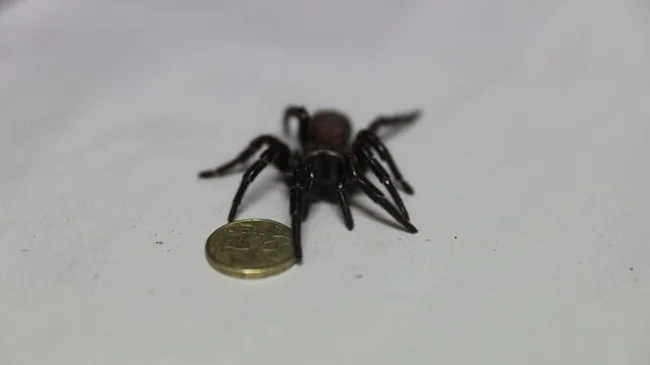
Typically in the spider world the female is more lethal, but funnel web spiders (Atrax) have a more venomous bite from the male. Any attack must be quickly treated with an antidote, especially if a child is affected. Several deaths due to venomous funnel web spider bites have been reported, with death occurring within an hour. However, since the development of an antidote in 1981, no further deaths have been recorded. This species is found primarily in south-eastern Australia (Sydney), but can also be found in New Zealand, Chile and Europe.
Interestingly, cats and dogs can survive a bite from a funnel web spider without any problems—it takes about 30 minutes for their bodies to neutralize the toxin. And only people have such a strong reaction to it. This poison affects the nervous system and causes symptoms such as rapid heartbeat, numbness/tingling in the mouth and difficulty breathing.
10. Six-Eyed Sand Spider 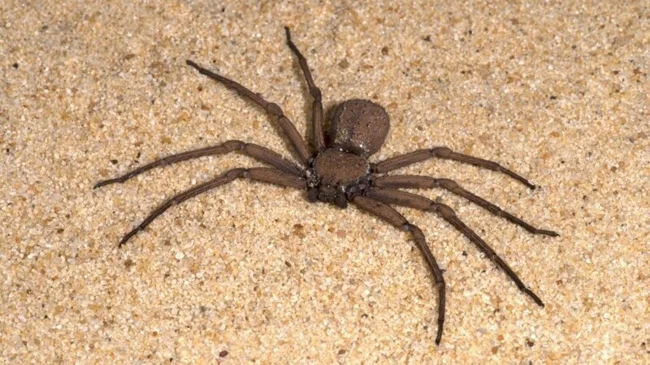
Sand spiders, Sicarius terrosus, live in barren deserts and can partially burrow into sand.
The six-eyed sand spider (Hexophthalma hahni), native to the deserts of southern Africa, burrows into the sand to ambush unsuspecting prey. The small, stiff hairs covering its body help hold sand particles in place and enhance camouflage. This spider is also known as the six-eyed crab spider because of its crab-like legs.
According to toxicological studies, the six-eyed sand spider (another arachnid that produces venom with necrotic effects) is the most poisonous of all its arachnid relatives. Scientists have discovered that its venom contains proteins that can cause tissue destruction, leaky blood vessels and blood thinning. There is currently no antidote.
11. Mouse Spider 
The black mouse spider (Missulena) with stocky, thick legs and a distinctly convex head and jaw looks much more intimidating than its name sounds. One species of these spiders lives in Chile, another also in South America, the rest are common in Australia. These spiders live in burrows filled with soil (hence the name), opening a hinged hatch to attack prey.
Their hard, large fangs can deliver a deep and very painful bite. The venom is highly toxic, but few cases of bites with serious consequences have been reported. Either mouse spiders do not use much venom, or this is a so-called “dry bite”. Fortunately, it has been proven that in cases of mouse spider bites, an antidote for funnel web spider venom can be used.
0 comments
